Renewable energy and data centers: Buyer, be aware
Across the world, data center owners and managers are striving to buy more renewable energy and reduce their dependence on fossil fuels. The global internet giants and the largest colocation companies have led the way with huge green energy purchases.
But the impact of renewable energy on the grid operator’s economics, and on the critical issue of grid reliability, is not well understood by many observers and energy buyers. In some cases, the purchase and use of renewable energy can expose the buyer to financial risks and can threaten to destabilize the economics of the power supply chain. For this reason, Uptime Institute is advising operators to conduct a thorough analysis of the availability and economics of renewable energy as part of their energy buying strategy.
The problem stems from the volatile balance of supply and demand. The intermittent nature of wind and solar generation moves the electricity markets in unexpected ways, driving down wholesale prices as renewable generation capacity increases. These price movements can stress the business model of reliable generation, which is needed to ensure continuous operation of the grid.
An analysis of market conditions in grid regions with high penetration of renewably generated power offers important guideposts for data center operators evaluating renewable energy purchases and the reliability of their electricity supplies.
Generally, average wholesale power prices decrease as generation capacity — particularly intermittent renewable energy generation capacity — increases. Consider the example of ERCOT, the Electric Reliability Council of Texas. ERCOT is the Texas grid operator recently in the news as it struggled with extreme weather. In that region, wind generation capacity more than doubled from 2013 to 2020. Against this increase in capacity, the average spot market price of electricity dropped from approximately $25/MWh (megawatt-hour) in 2016 to $15/MWh in 2020. (Solar generation exhibits the same negative correlation between installed capacity and wholesale prices.)
This reduction in wholesale price in turn reduces the revenue stream of power purchase agreements (PPAs) — an instrument used by many data center operators. In a PPA, the purchaser takes on the financial risk of power generation by guaranteeing to pay the generator a fixed price for the electricity of the generated MWh over the contract term. If the spot market revenue for the generated power is less than the PPA revenue (based on the agreed contract price), the purchaser will then pay the difference and take a loss.
This does happen: Currently, PPAs signed in the Texas ERCOT region in 2016 are generating losses for their purchasers. Figure 1 illustrates how higher average available wind generation capacity (bars) reduced the daily average spot market prices at two settlement hubs (lines) during January 2021.
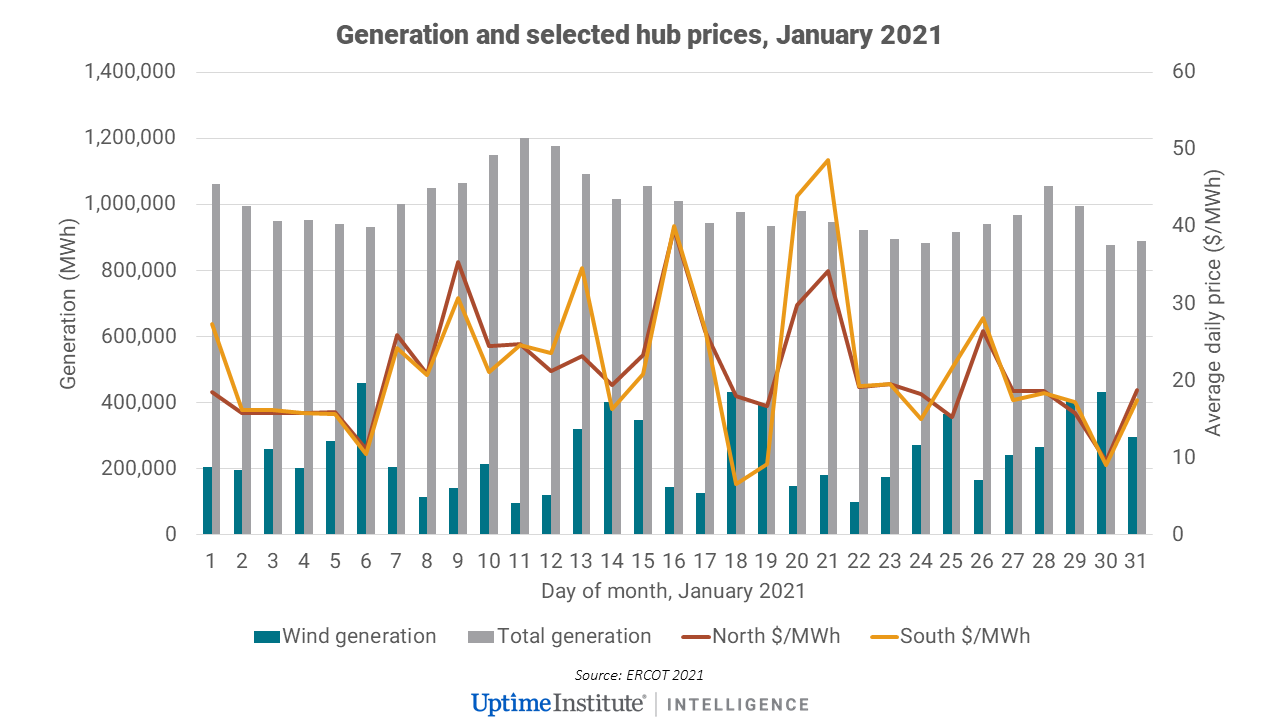
The loss of revenue resulting from falling wholesale prices also challenges the business models of nonrenewable fossil fuel and nuclear generators, making it difficult for them to meet operation, maintenance and financing costs while achieving profitability. Unless the grid has sufficient renewable energy storage and transmission, this will threaten the reliable supply of power.
The impact of renewable energy on the reliability and economics of the grid
The impact of renewable energy on the reliability and economics of the grid does not stop there. Three further issues are curtailment, congestion and reliability.
Curtailment. As intermittent renewable capacities increase, higher levels of output can exceed grid demand. To maintain grid stability, power must be sold to other grid regions or some portion of the generation supply must be taken offline. In the California grid district CAISO (the California Independent System Operator), solar generation curtailments have grown from 400 GWh (gigawatt-hours) in 2017 to over 1500 GWh in 2020. This results in lost revenue for the curtailed facilities. Oftentimes, the need to ensure that reliable generators are available to the grid requires the curtailment of the intermittent renewable generators.
Congestion. Congestion occurs as transmission capacity approaches or exceeds full utilization. To stay within the capacity constraints, generators need to be rebalanced to assure supply and demand will be matched in all local regions of the grid. This condition often results in increased curtailment of renewable generation. Transmission costs may also be increased on transmission lines that are near capacity to send an economic signal to balance capacity and demand.
Reliability. As intermittent renewable capacity increases it reduces the percentage of time fossil fuel and nuclear generation sources are dispatched to the grid, reducing their revenues. While the delivery of renewably generated energy has increased, it still varies significantly from hour to hour. In ERCOT in 2019, there were 63 hours where wind satisfied more than 50% of demand and 602 hours where it supplied less than 5%. Figure 2 provides an example of wind generation variability over two days in January 2019 in the ERCOT area. On January 8, the available wind generation capacity averaged roughly 8 gigawatts (GWs), satisfying approximately 25% of the demand. On January 14, the output was significantly reduced at 2 GWs, satisfying approximately 10% of demand.
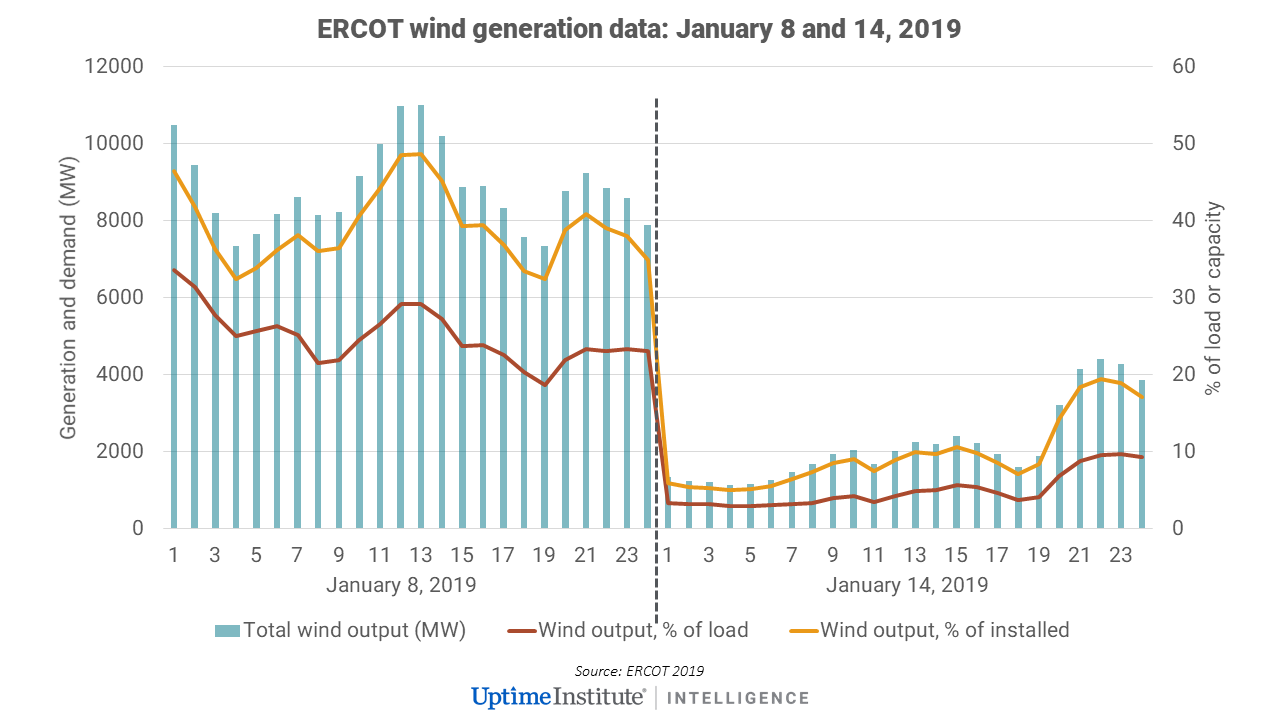
To deal with this volatility, the system operator needs to have a capacity plan, using economic signals or other strategies to ensure there is sufficient capacity to meet demand under all possible mixes of renewable and conventional generation.
As the proportion of renewably generated electricity in their supply grid grows, data center operators will need to carefully evaluate their renewable energy procurement decisions, the overall generation capacity available under different scenarios, and the robustness of the transmission system capacity. There is no guarantee that a grid that has proved reliable in the past will prove equally reliable in the years ahead.
While purchases of renewable energy are important, data center operators must also advocate for increased transmission capacity; improved, automated grid management; and robust, actionable capacity and reliability planning to ensure a reliable electricity supply with increased renewable content at their facility meter.


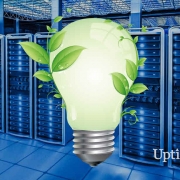 UI @ 2021
UI @ 2021

 UI 2020
UI 2020 UI 2020
UI 2020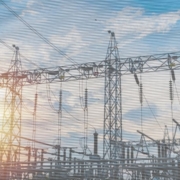
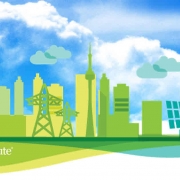 UI @ 2021
UI @ 2021
 UI @ 2021
UI @ 2021